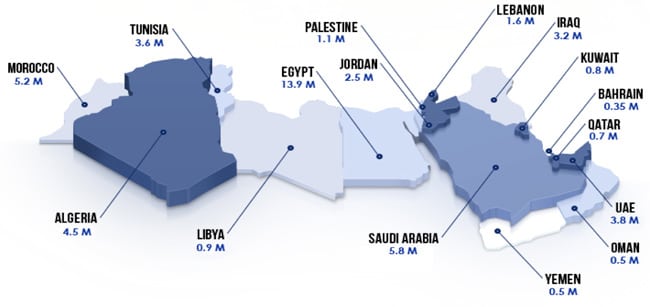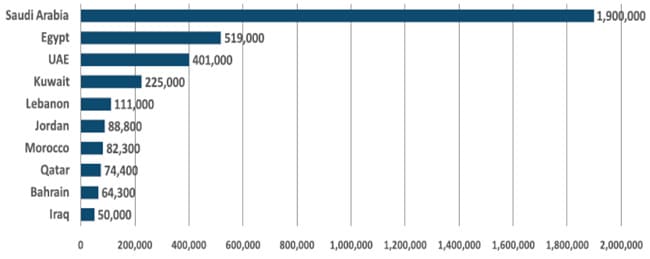Using social media to reach students in the Middle East and North Africa
Roughly four in ten international students say that social media influenced their decision to study abroad. Around half read comments about institutions they were interested in on institutional profile pages on social networks. Others checked out the online profiles of other overseas students, gathered recommendations for where to study from friends online, or were exposed to related advertising on social sites. One in four chose to contact institutions directly via their social media accounts. These are some of the findings from an annual survey of international students conducted by IDP Education. IDP’s Manager, External Affairs, Kim Dienhoff, presented high-level findings from four years of survey data at the recent NAFSA conference in Boston, Massachusetts. The session focused in large part on reaching students in the Middle East and North Africa (MENA). With nearly a third of the region’s 355 million people aged 15 to 25, it is perhaps not surprising that Internet usage, and the penetration of social networks in particular, is high. Ms Dienhoff paired the IDP survey data with additional research to provide an important summary of social media habits and trends in the region. Social media usage in MENA was particularly visible during the pro-democracy protests of the Arab Spring beginning in 2011, leaving many observers with the impression that major global networks, such as Facebook and YouTube, are widely used across the region. Internet penetration is high with nearly 90% indicating they access the web from home. A much smaller proportion (34%) say they have Internet access at work. "For marketers this probably means that you need to schedule online activities like chat rooms, Skype sessions, virtual fairs, or webinars in the evening once people are home from work," notes Ms Dienhoff. There are of course variations from country to country. Internet penetration varies from 85-90% in Bahrain, the UAE, and Qatar to, at the lower end of the range, 44-50% in Jordan and Egypt. Nearly nine in ten Internet users in MENA use social media every day. Smartphones account for 40% of web impressions in the region (about 45% above the global average), and smartphone penetration ranges from a low of 16% in Morocco to 73-75% in the UAE and Qatar. It is fair to say that, at these levels of adoption, a mobile responsive site is a must for reaching students and parents in the region.
Facebook is your #1 friend
As the following chart illustrates, Facebook is the leading network with a 89% penetration among MENA Internet users. Twitter and Google+ are a distant second and third respectively, but each nevertheless has been widely adopted as well. As with the Internet and mobile usage patterns we noted earlier, the chart reflects national variations as well, including the notably high levels of Twitter usage in Saudi Arabia.


Beyond Facebook
Twitter has also been widely adopted by MENA Internet users and the following chart provides a summary of Twitter user counts for selected markets across the region.

Implications for marketers
As the preceding charts and figures clearly reflect, social media usage in the region is highly concentrated around the most-popular social networks and social content sites in the world, including Facebook, Twitter, and YouTube. "The good news is that they are using the same platforms you are already familiar with," adds Ms Dienhoff. (Not to mention that you can reach the vast majority of prospects in the region in English and Arabic.) For additional trends and best practices in social media, please see our post "Facebook is still the top social network but other platforms are growing faster." It includes links to some of our most-popular posts on social media strategy, including tips for Facebook, Twitter, and social video.















